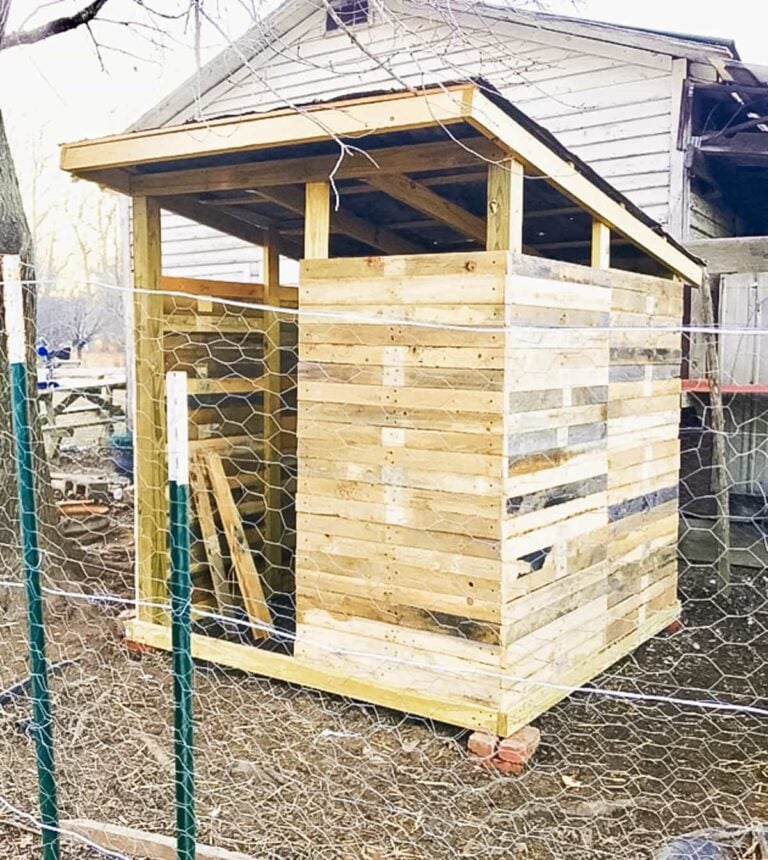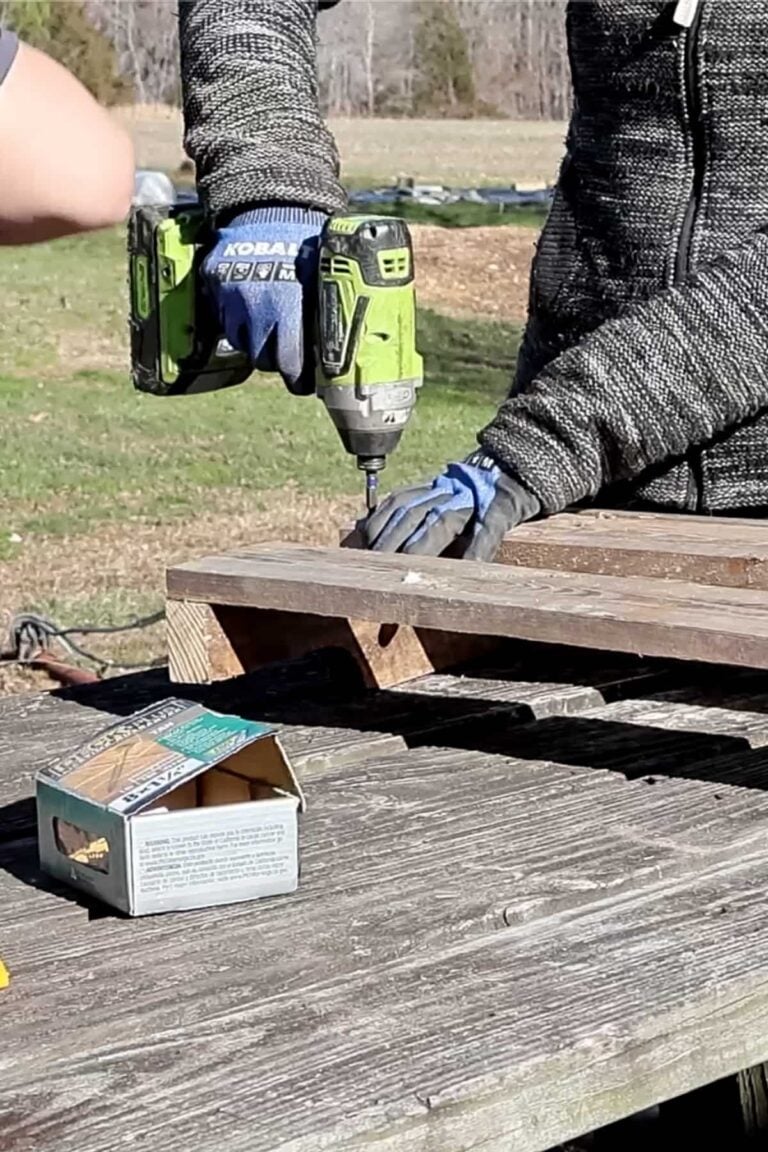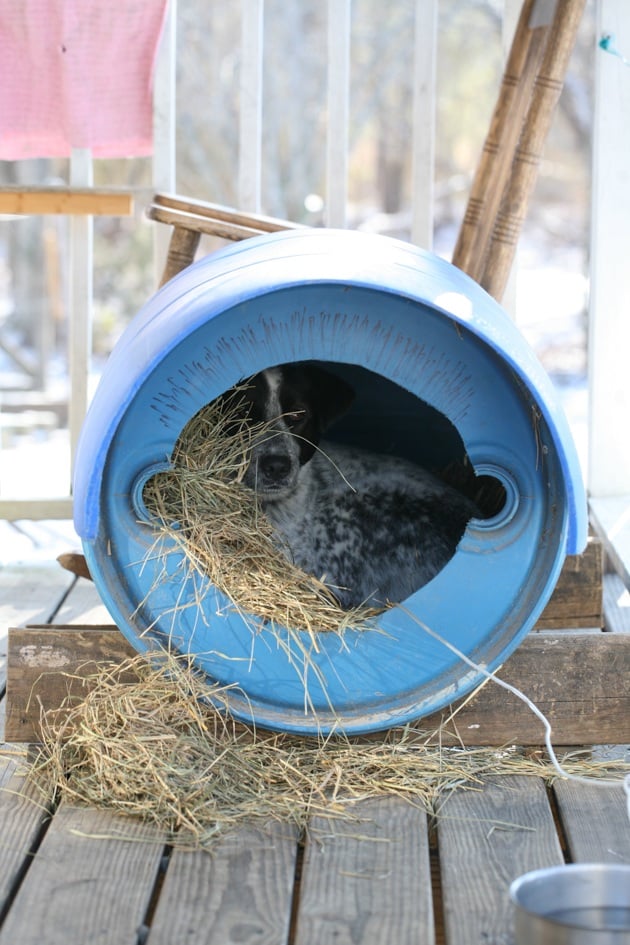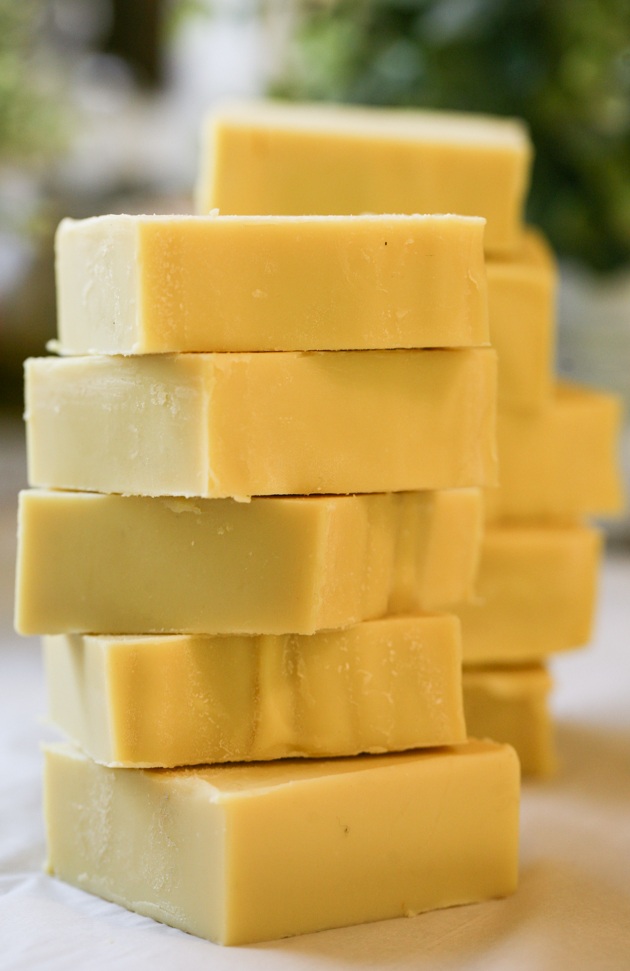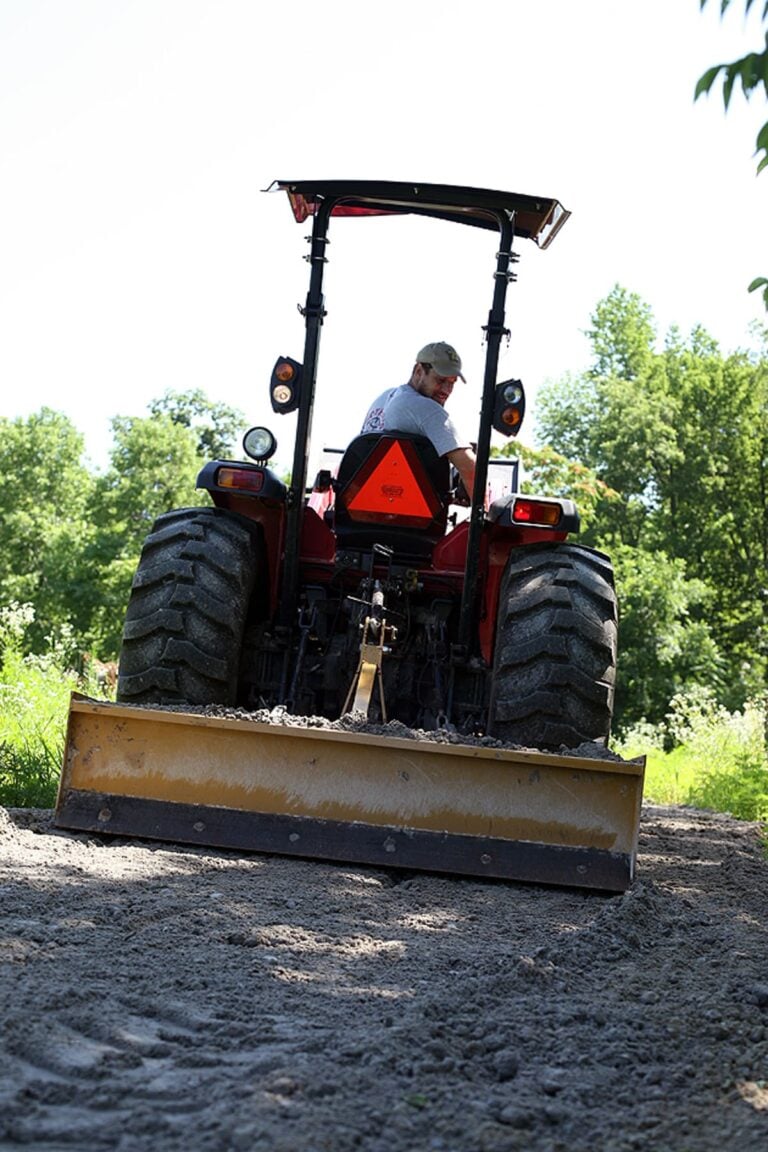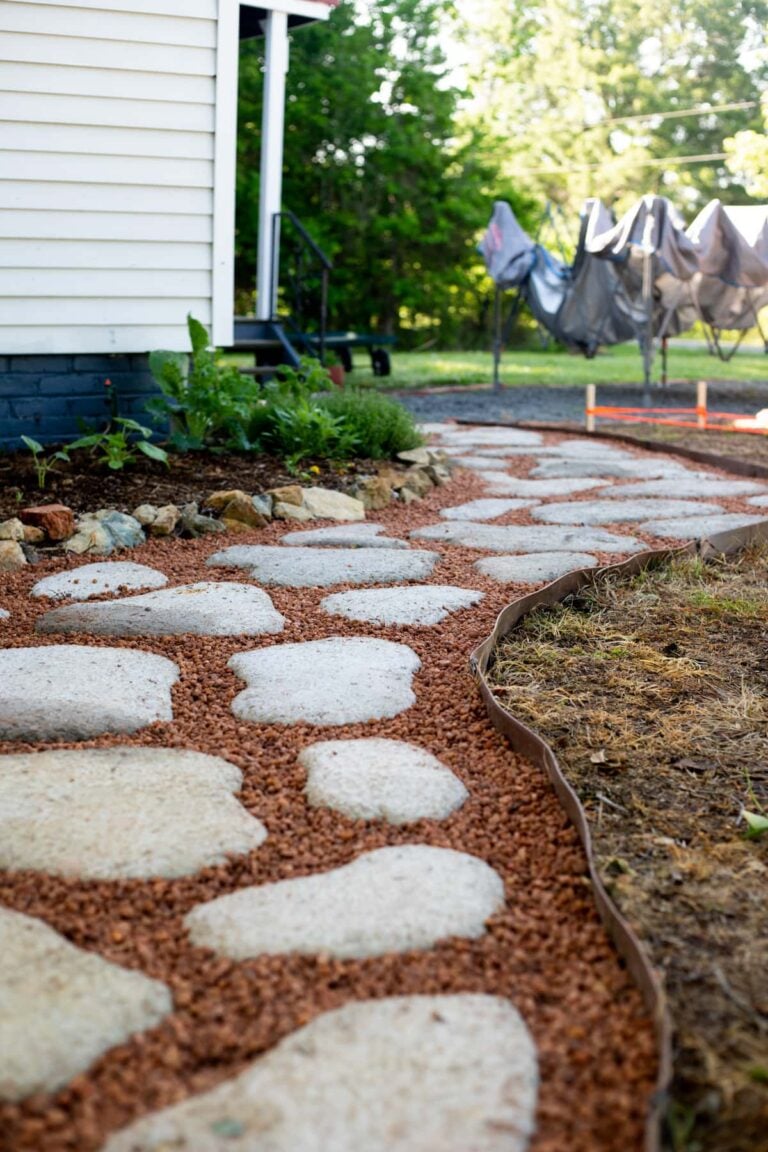Installing Thin Brick
This post may contain affiliate links, view our disclosure policy for details.
Installing thin brick is relatively easy and a great DIY project. Thin bricks are light and can be installed on many surfaces. In this tutorial, I will walk you through how to install thin brick on the floor or the wall.
I’ve wanted a woodstove for many years. This year, I finally decided that it was time to purchase one and of course, install it myself. My living room is small, so I wanted the woodstove to blend into the room as smoothly as possible. I didn’t want it to be this bulky thing in the middle of the room. However, I still needed to protect my wall behind the stove and the floor under it from the heat.
I’ve always loved bricks, and I knew that since they were baked at a very high temperature, they would be perfect around the wood stove, but I didn’t want to use regular-size bricks on the floor since they are too bulky and I couldn’t use them on the wall since they are too heavy.
Installing Thin Brick…
I researched a little bit and came by thin bricks. They aren’t any sort of veneer or any other man-made lab product. These thin brick tiles were cut from regular bricks that you would use to pave outside or to build a house with. They aren’t the cheapest option, but they are strong, light, thin, and beautiful, bringing the outside into the house and giving the space a sort of earthen warmth.
Why Install Thin Brick…
- Real – these thin bricks are not any sort of plastic or man-made lab material, they are actual clay bricks. I don’t know about you, but for me, anything that came from nature has a whole different energy than something that came from a lab.
- Heat resistant – these thinner bricks are cut from the regular size bricks which are baked at 2000 degrees F. This makes them capable of handling heat. You’ll notice that in this project, I used these thin bricks under and behind my new wood stove to protect the wall and floor.
- Light – these are light and therefore they can be installed on any surface, even directly on drywall and they don’t need a foundation to support them. All you need is good glue!
Where to Install Thin Brick…
You can install thin bricks on any surface. A concrete wall or concrete floors, plywood, drywall, and so on. Just make sure that you clean your surface well (remove old paint, glue, and so on), and make sure that it’s smooth and flat.
These thin bricks can be installed for just decoration, for example, on the wall, however, they can also be installed for their functionality as a strong floor or on a surface that requires the protection of rock for some reason (like the wall behind my wood stove).
Cost of a Thin Brick Wall…
Thin bricks are 2 inches wide, 7.5 inches long, and 0.5 inches thick. I purchased mine from a local Lowe’s. There were 25 bricks in a box and one box covers about 7.3 sq. ft. Each box was about $70.
Materials…
The materials below are the materials I used for my project. The materials that you’ll need might change a bit depending on your project. I linked everything to Lowe’s. Unfortunately, they change their website sometimes and the links change. If the link doesn’t work, just search their site by the name of the product, it should still be there.
- Thin brick tiles – I am linking here to the color that I used. They also come in a cream color.
- Loctite masonry glue
- 1/4 inch cement boards – the ones found in the tile section, not in the masonry area of Home Depot/Lowe’s.
- Spacers – if installing on the floor, you can use 3/8 plastic spacers. If you are installing these thin bricks on the wall you’ll have to find/make spacers that can support the whole length of the brick (or a few bricks at a time). As you can see in the video, I used thin strips of cement boards since I had them left over. You can cut strips of 3/8th plywood or come up with a different solution.
- Level – a small one will do if you install a small area, but you might need a longer one if your rows are longer.
- Hammer and chisel – or mason hammer to cut the bricks.
- Concrete block – I just used that as a surface to break the bricks on.
- Grinder (with the right blade) – you’ll only need a grinder to cut little notches. I didn’t need to use it but wanted to list it here anyway.
- ProFinish mortar – instead of tile grout to fill between the bricks.
- Bucket – to mix the mortar in.
- Drill with mixing arm – at my local Lowe’s the mixing arm is found in the paint section or the masonry section.
- Grout bag – this can be found in the tile section. You’ll see in other videos that many use it to apply the mortar between the bricks. It didn’t work for me… It was way too hard for me to get the mortar out of the bag (see video), but again, I wanted to list it here in case you want to give it a try.
- 3/8th inch steel brick jointer
- Asphalt brush
Watch me Install Thin Bricks…
How to Install Thin Brick Step by Step…
Step one – clean the surface. Once you decide where you’re going to install your thin bricks, make sure that the surface is clean. If you need to, scrape off old paint or glue and make sure that it is flat and smooth, then wipe it down with a damp towel.
Step two – glue the thin brick. Measure the width of your space, divide it in two, and mark a center line. Lay the first two bricks for the first row on each side of that center line using glue and spacers, then complete the first row. If you’re installing thin bricks on a wall you will have to let this first row dry for 12 to 24 hours before continuing with the next few rows. If you are installing thin bricks on the floor you can keep on going and install the rest of the rows.
If you need to cut the brick, place it on a cinder block or another hard surface and use a chisel and a hammer or a masonry hammer to hit the brick where you want it to break, usually the bricks break easily. Then glue the smaller pieces in place to complete the row. As you go, use the level to make sure that the rows are leveled. If you need to, use little pieces of chipped bricks to shimmy and hold the bricks in place until the glue dries, so they are leveled.
Step four – apply the mortar. Once the bricks are all glued in place, let them rest for 12 to 24 hours before applying the mortar. Mix the mortar with enough water so it is not too runny but also not too dry. Either use the grout bag, or as you can see me doing in the video, just a good old spoon, and add the mortar in between the bricks.
Let the mortar dry for a few minutes, and then use the steel jointer to press the mortar in between the bricks by moving it back and forth. Use a brush to brush away the access mortar. You can use a lightly wet sponge to wipe the bricks if there is any grey “mortar juice” on them.
Maintenance and Cleaning…
Make sure to let the mortar dry for at least 24 hours. Then, there isn’t much maintenance to a thin brick wall or floor. If you need to sweep it or brush it, you can do that. Or if you feel that you need to wipe it down that is also a simple thing to do with a damp cloth or a sponge.
Options and Tips…
- Use the Speedymason – when I was doing my research for this project, I came across a product called Speedymason. These are premade tracks that make it easy to position the thin bricks on surfaces. I really don’t think that it’s necessary and in fact, it might take away some of the artistic fun of this project, but I’m going to link it here anyway just in case you want to check this product out.
- It doesn’t have to be perfect – the mortar is part of the beauty of the installation of these thin bricks. I tend to want everything to be perfect, but I think that in this project it is nice if the spaces are not perfect. This gives the thin brick wall or floors more of a natural feel.
- Mix colors – at the time of my writing of this post, thin bricks, come in two different colors. Consider mixing the two colors. I haven’t tried it, but it might produce a nice result.
- Make different patterns – you don’t have to lay the bricks in straight rows like I did in this project. You can choose a different pattern and get a little more artistic.
This DIY project is fun and can add a lot of character to a space. Thin brick are easy to work with and add a special vibe to any room. I hope that you’ll consider installing thin brick in your space and if you do, I hope that this tutorial and video were helpful.







